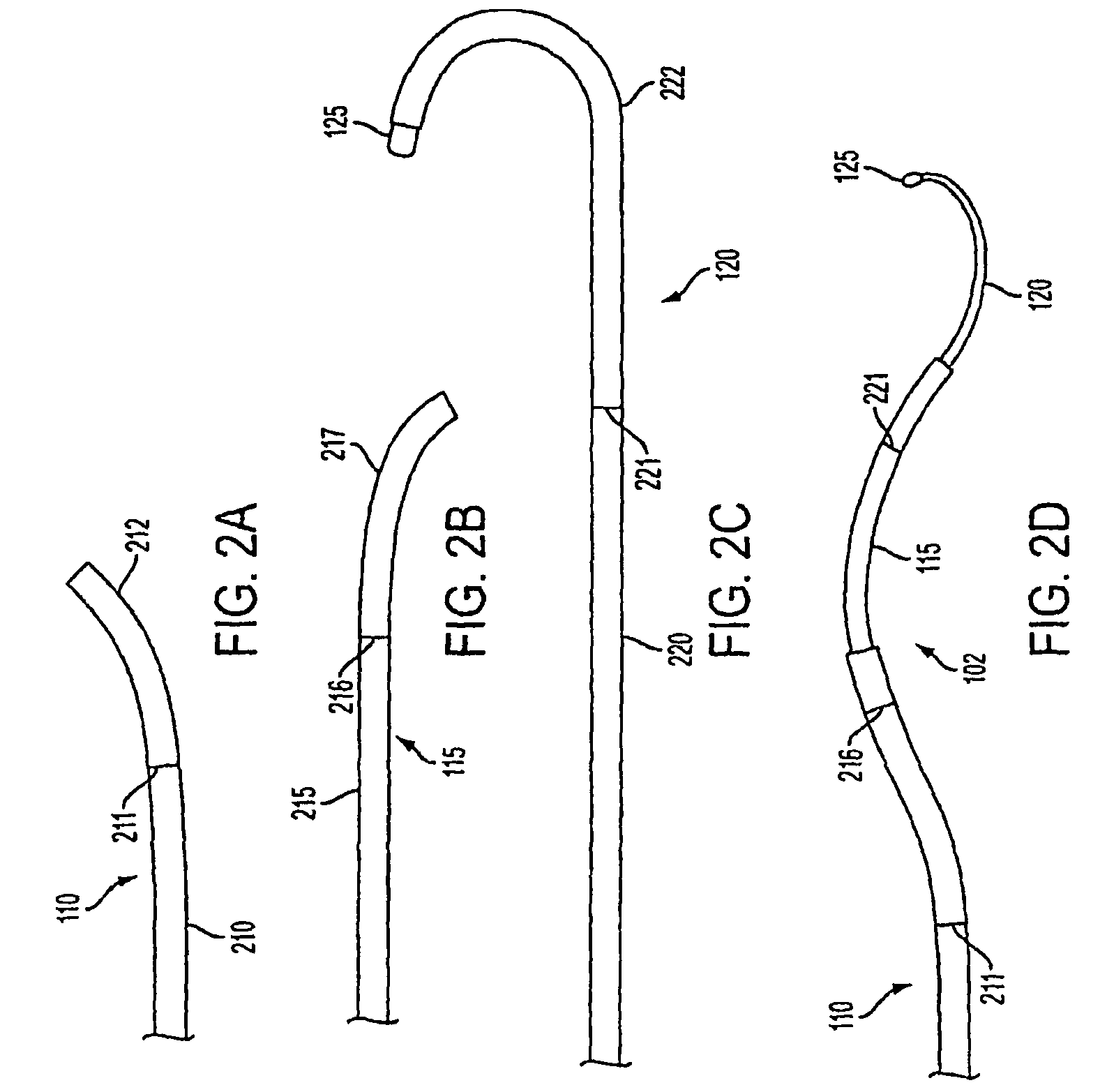Active cannula for bio-sensing and surgical intervention
a biosensor and active technology, applied in the field of surgical cannulas and biosensors for minimally invasive surgery, can solve the problems of confined spaces within the body, affecting the accuracy of surgical results, and requiring large incisions, and reducing so as to reduce collateral trauma, improve the accessibility of anatomical features, and reduce the effect of scarring
- Summary
- Abstract
- Description
- Claims
- Application Information
AI Technical Summary
Benefits of technology
Problems solved by technology
Method used
Image
Examples
Embodiment Construction
[0037]The present invention involves an active cannula, (also referred to as a surgical cannula) through which a surgical needle may be deployed. The active cannula may also be referred to as a snake-like surgical robot. The active cannula has a plurality of concentric flexible hollow tubes, wherein each tube has a predetermined flexibility and a pre-formed curvature. The tip of the active cannula is advanced by selectively translating and rotating each of the flexible tubes. Depending on the flexibility, preformed curvature, angular orientation, and translational position of each of the flexible tubes, the active cannula can be manipulated to take a planned complex shape that enables it to maneuver through free space (e.g., navigating through sinus passages or within bronchial airways) and / or through tissues of various resistances. The shape of the active cannula will also be affected by the resistance of the tissue medium in such a way that the resistance of the tissue medium may ...
PUM
 Login to View More
Login to View More Abstract
Description
Claims
Application Information
 Login to View More
Login to View More - R&D
- Intellectual Property
- Life Sciences
- Materials
- Tech Scout
- Unparalleled Data Quality
- Higher Quality Content
- 60% Fewer Hallucinations
Browse by: Latest US Patents, China's latest patents, Technical Efficacy Thesaurus, Application Domain, Technology Topic, Popular Technical Reports.
© 2025 PatSnap. All rights reserved.Legal|Privacy policy|Modern Slavery Act Transparency Statement|Sitemap|About US| Contact US: help@patsnap.com



